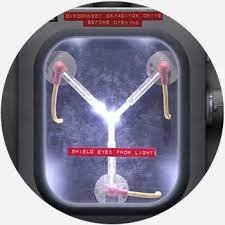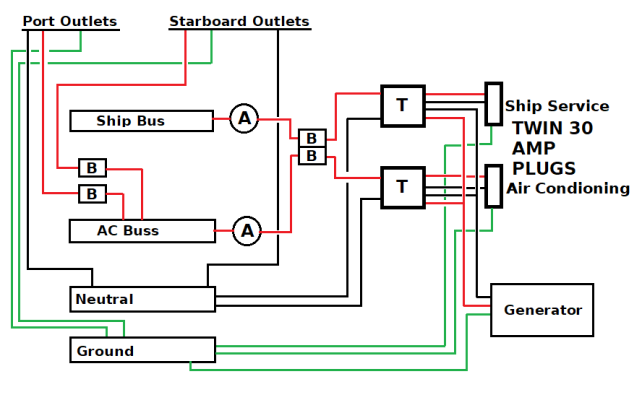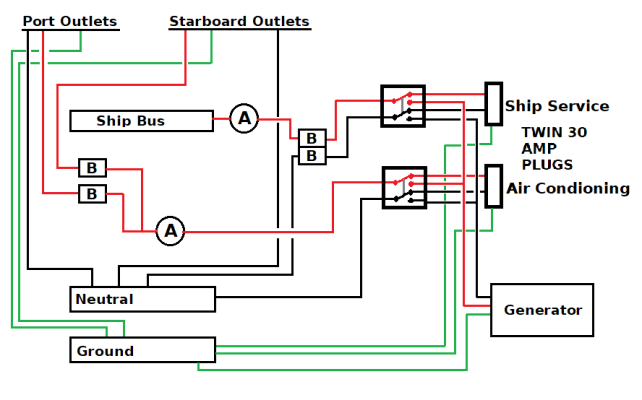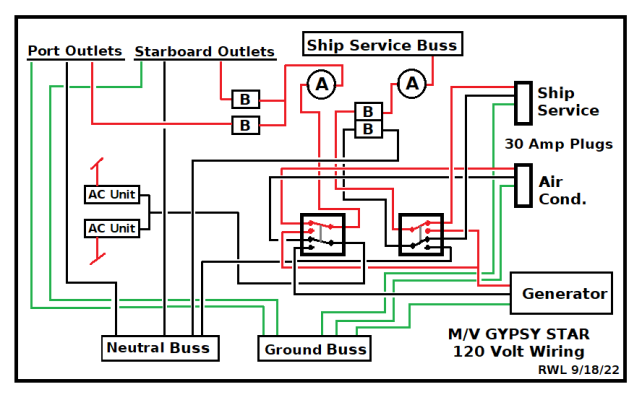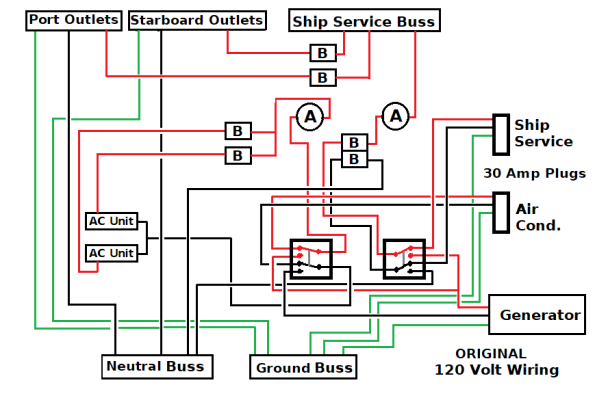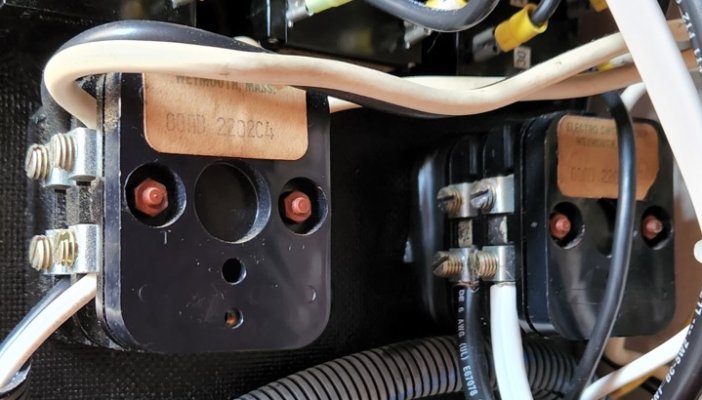Roger Long
Senior Member
Resolved but, if you like a mystery....
Our 1975 vintage Cruiseair reverse cycle AC system reached its “Use By” date during the August heat wave. Since we survived, I figure we can kick that can down the road but we need the heat for going south. We prefer to use portable ceramic heaters anyway since they are quieter and we can put them where they are most needed. Our two Cruiseair units were on a separate AC bus so I decided to disconnect them and send the output from the two breakers to the two separate circuits for the port and starboard outlets (after disconnecting them from their breakers of course)so we can run an additional heater and also cook and make hot water without needing to shut the heaters off.
Quick and simple job and I used one of those three LED testers to be sure I hadn’t slipped up somewhere tracing the wire bundles with my fingers. All good so I went to have lunch. I returned and finished re-bundleing the wires with cable ties and replacing the access panel and helm wheel. I then noticed that a rechargeable flashlight I had plugged in was not charging. I stuck the tester in and, yikes, it showed that hot and ground were reversed. I checked directly at the pedestal and boat end of the power cord and got the proper indication both places. Switched everything on and off, rechecked all the connections, no joy. Every outlet in the boat showed the same thing.
I decided to try it on the generator to see what I could learn. Disconnected the shorepower, fired up the Westerbeke, and checked the outlets. Everything was good, two LED’s showing properly.
I then turned off the generator and went back to shore power. Every outlet good. Switched things on and off and could not recreate the problem. The boat is very simple, pretty much exactly as she came out of the yard in 1975. No isolation transformers, inverters, or anything fancy.
Anyone have any idea what could have been going on here?
I did notice that the shore power voltage was 138. I told the marina and they said the boost transformers they use because of the long docks haven’t been readjusted yet now that they don’t have a lot of boats running air conditioning. I leave the boat unplugged anyway so I’m not concerned about that.
Our 1975 vintage Cruiseair reverse cycle AC system reached its “Use By” date during the August heat wave. Since we survived, I figure we can kick that can down the road but we need the heat for going south. We prefer to use portable ceramic heaters anyway since they are quieter and we can put them where they are most needed. Our two Cruiseair units were on a separate AC bus so I decided to disconnect them and send the output from the two breakers to the two separate circuits for the port and starboard outlets (after disconnecting them from their breakers of course)so we can run an additional heater and also cook and make hot water without needing to shut the heaters off.
Quick and simple job and I used one of those three LED testers to be sure I hadn’t slipped up somewhere tracing the wire bundles with my fingers. All good so I went to have lunch. I returned and finished re-bundleing the wires with cable ties and replacing the access panel and helm wheel. I then noticed that a rechargeable flashlight I had plugged in was not charging. I stuck the tester in and, yikes, it showed that hot and ground were reversed. I checked directly at the pedestal and boat end of the power cord and got the proper indication both places. Switched everything on and off, rechecked all the connections, no joy. Every outlet in the boat showed the same thing.
I decided to try it on the generator to see what I could learn. Disconnected the shorepower, fired up the Westerbeke, and checked the outlets. Everything was good, two LED’s showing properly.
I then turned off the generator and went back to shore power. Every outlet good. Switched things on and off and could not recreate the problem. The boat is very simple, pretty much exactly as she came out of the yard in 1975. No isolation transformers, inverters, or anything fancy.
Anyone have any idea what could have been going on here?
I did notice that the shore power voltage was 138. I told the marina and they said the boost transformers they use because of the long docks haven’t been readjusted yet now that they don’t have a lot of boats running air conditioning. I leave the boat unplugged anyway so I’m not concerned about that.


